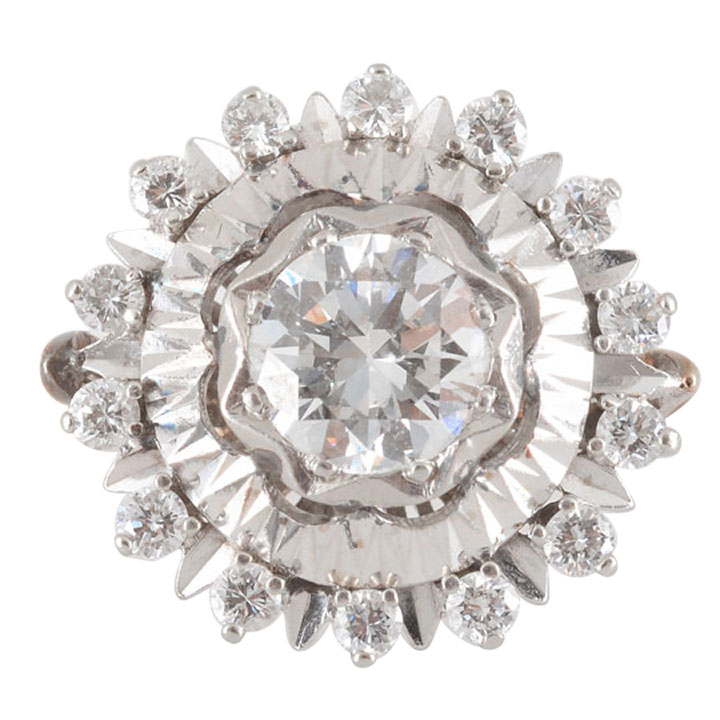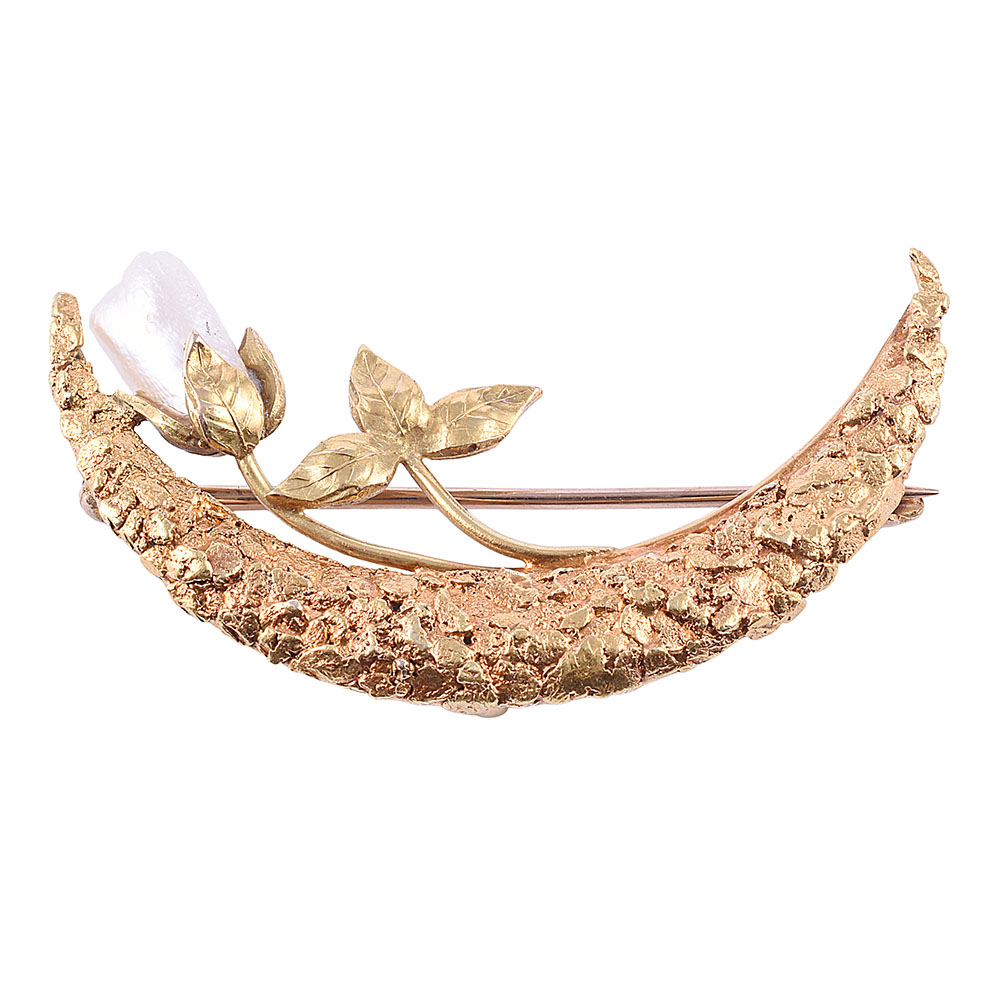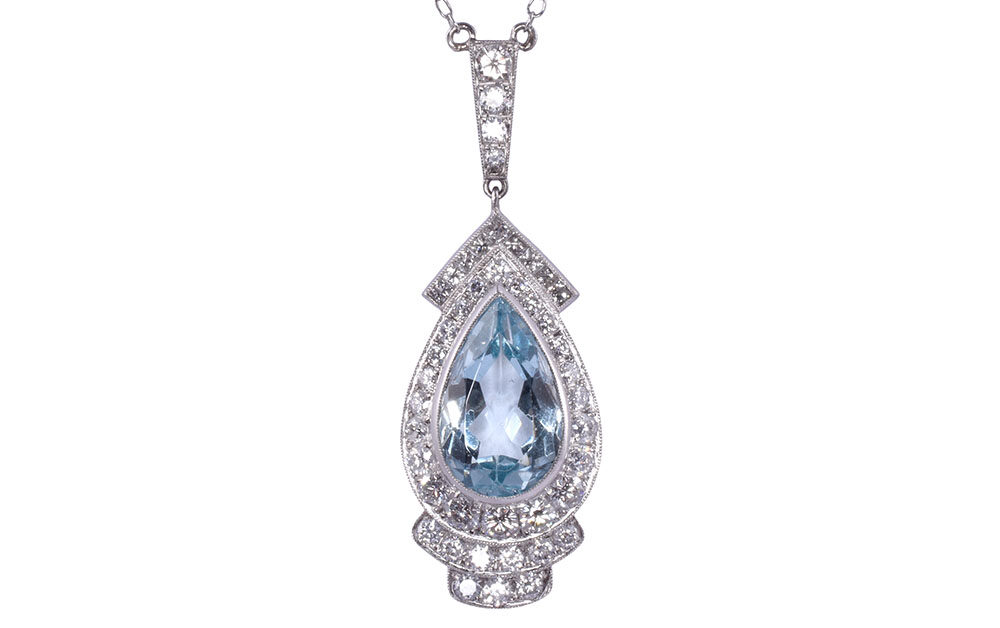4 C’s of Diamonds – Part 4 Cut

In this four part series we have looked at the Carat, Clarity, Color, and now the Cut, of diamonds.
When we are talking about the cut of diamonds, we are not talking about the shape, ie. marquise, heart, trillion, etc. We are actually referring to the proportions of the diamond.
Above Image Credit GIA: https://4cs.gia.edu/en-us/diamond-cut/
How the diamond is cut, the proportions, symmetry and polish, determine the light return, brightness and scintillation (sparkle) of a diamond. Here at Solvang Antiques, we also work with older cuts of diamonds. The difference in these diamonds will be discussed below.

1.0 Carat VS2 Old European Cut Center Diamond Art Deco Platinum Ring
When evaluating diamond cut, the diamond that has an even pattern of bright and dark areas, scores in the top category for all grade-setting determinants.

2.01 Carat VS1 Center Diamond Ring
A diamond’s cut is crucial to the stone’s final beauty and value. And of all the diamond 4 C’s, it is the most complex and technically difficult to analyze.

1.19 Carat EGL Certified Solitaire Diamond Engagement Ring
Brightness: Internal and external white light reflected from a diamond.
 2.0 Carat VS2 Center Diamond Ring
2.0 Carat VS2 Center Diamond Ring
Fire: The scattering of white light into all the colors of the rainbow.
 1.69 Carat Old European Cut Center Diamond Engagement Ring
1.69 Carat Old European Cut Center Diamond Engagement Ring
Scintillation: The amount of sparkle a diamond produces, and the pattern of light and dark areas caused by reflections within the diamond.

GIA Certified 1.21 Carat VS1 Square Modified Brilliant Center Diamond Engagement Ring
GIA’s diamond cut grade also takes into account the design and craftsmanship of the diamond, including its weight relative to its diameter, its girdle thickness (which affects its durability), the symmetry of its facet arrangement, and the quality of polish on those facets.

1.17 Carat Center Old European Cut Diamond Ring
The GIA Diamond Cut Scale is based on the round brilliant cut (which dominates the market) and has five grade levels: Excellent, Very Good, Good, Fair and Poor.

GIA Certified Excellent Cut Grade Round Brilliant Center Diamond Wedding Set
Historically the round cut has morphed from Rose Cut to Old Mine Cut, then Old European Cut and now the Round Brilliant. Each improved with the cutting technologies of the time to provide more light return, scintillation and fire.

Old Mine Cut Center Encircled with Six Rose Cut Diamonds
The older diamond cuts are not inferior in any way. In picturing the difference between an Old European and a Round Brilliant, think of the difference between sequins and glitter. Both are pretty and sparkly, just in different ways.

1.25 Carat VS1 Old European Cut Center Diamond Platinum Ring
An easy way to tell if you are looking at an Old European Cut or a Round Brilliant is to look for the culet. In Round Brilliants it comes to a point and in the Old European cuts you can see the small circle in the center of the diamond showing the cut culet.

1.80 CTW Old European Cut Diamond Ring
Diamond cut is still extremely important in other shapes beyond round, but the cut grades do not extend to them due to the great variance of these cuts. One such example is the “bowtie” or absence there of, in marquise, oval and pear diamonds. A bowtie is a phenomenon created when the light return is diminished on the widest part of the curve. This creates a darker “bowtie” in the center of the stone.

1.50 Carat VS2 Pear Center Diamond Ring
We hope you have enjoyed these last four weeks of learning about the 4 C’s of diamonds with us. If you missed the first three in the series, you can catch up with Carat here, Clarity here , and Color here.



